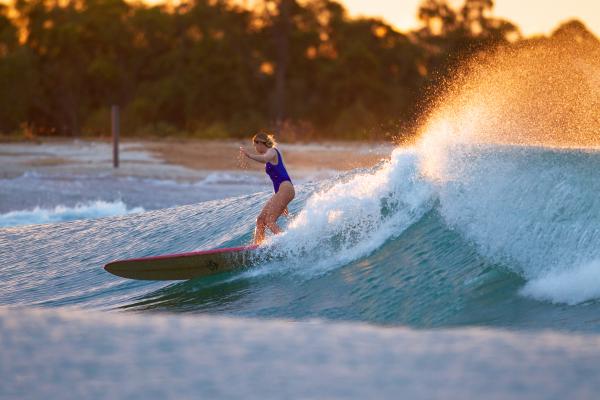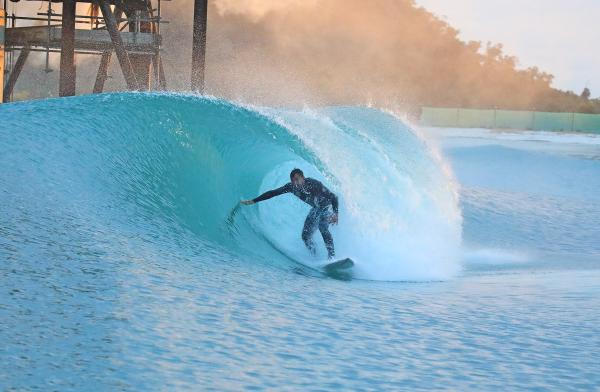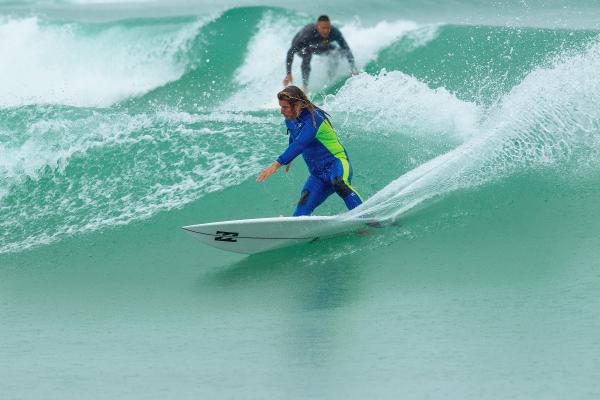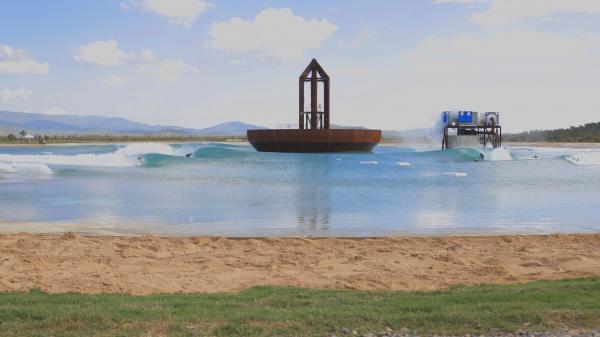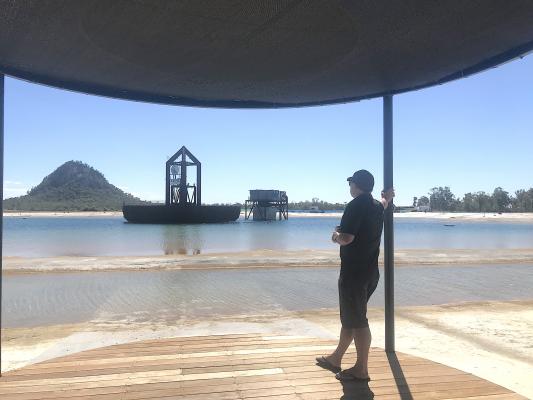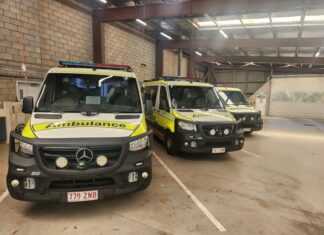As unlikely as it seems, Surf Lakes, near Yeppoon in central Queensland, looks set to become Queensland’s first wave park. Phil Jarratt reports
With Noosa builder/developer Mark Bain’s proposal for a low-key wave pool on the North Shore thrown out by council – at least in its current form – and the Consolidated Properties/World Surf League proposal for a Kelly Slater Surf Ranch at Coolum seemingly stalled, Surf Lakes, six hours drive north of us and just west of a relatively surf-free coast, may defy the odds and become the state’s first commercially operated wave park.
Known to skeptics as “the big coffee plunger”, Surf Lakes opened 18 months ago purely as a research and development facility, but it may now become the first wave park of the modern era to come up with a successful business model, with the pool being adapted for multiple leisure use with and without waves, and a three-tiered eco-friendly holiday park planned for the perimeter of the 15-hectare site, leased from a cattle property. But, apart from a system that can produce 2,000 waves an hour, spread over five different surfing areas on the lake, the main thing that Surf Lakes has going for it is its location.
Having previously visited wave parks in California and Europe, when I visited this one last month I was knocked out by the superb panoramic vista over Darumbal country, with its volcanic plugs poking out of thick bushland. The coffee plunger itself is not a thing of great beauty, but it almost seems to complement the plugs that are its backdrop. At sunset it is magical. Certainly it runs rings around Kelly Slater’s California Surf Ranch, which features something that looks like a freight train pushing a wave down a pool in the middle of a dust bowl.
It’s little more than eight years since surfer and mining engineer Aaron Travis started using a plunger to make ripples in a backyard pool, five years since he built a crowd-funded 1:25 scale model, four years since he built a 1:10 scale model on a friend’s farm, three years since turning the first sod at Yeppoon. Now the company has raised more than $22 million in investment, fielded enquiries from hundreds of potential licensees around the world and has a handful of actual commercial agreements in place that might see them replicating the Yeppoon model within the next year, and later building a scaled down model suitable for smaller urban sites.
So, on the face of it, after less than a decade, Aaron Travis and his partners are about to make a killing, right? Well, maybe but not quite.
The patented “5 Waves” technology that produces the 2,000 waves an hour – providing, say, 10 waves each for 200 surfers paying $50 each – is a monster with a mind of its own. At its first public outing last year, the 1400-tonne plunger snapped under the force of pushing out waves, and it took the Surf Lakes team months to rebuild and recover from the embarrassment. The short life of the Yeppoon facility has been quite a battle. “But it’s one that we’re winning,” says operations and media manager Wayne Dart, who has been camped out on the site for months with just his British bulldog, Pumpkin, for company.
Like everyone on the Surf Lakes team, Dart is a true believer. He says the kinks in the system are being ironed out systematically, and with every trial session, the artificial waves produced get more intricate and, well, more real. But what really excites him now is that everyone is united behind the objective of turning the R & D facility into a family-based resort, and have it making money rather than hemorrhaging it.
Since this was not the original intent, it involves rebuilding and then disguising the wave-making machinery, landscaping the surrounds, putting in bars, cafes and other visitor facilities, and eventually creating a campground in the nearby bush and eco-cabins on higher ground beyond it. A lot of work, a lot of funding.
But Surf Lakes has the backing of the enthusiastic local community along this pleasant coastal strip, including the council and the tourism authority, who see it as a low impact addition to the area’s tourism offering. “Everyone is pretty excited about what this could develop into,” says Dart.
Meanwhile, closer to home, the Coolum Surf Ranch is waiting for a state government decision on its future as community hostility towards it grows. Last month a petition with 2000 signatures was presented to the government calling for it to be scrapped, and the Sunshine Coast Environment Council called it a “trojan horse for urban development”.

